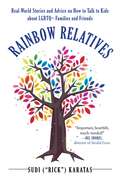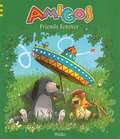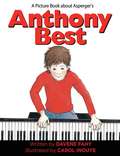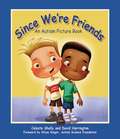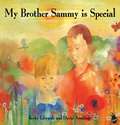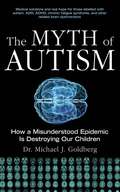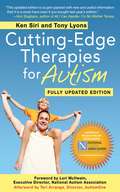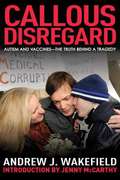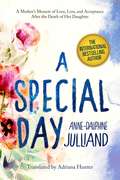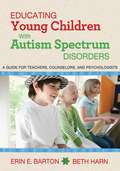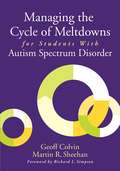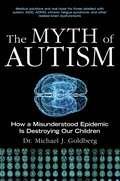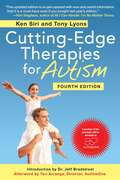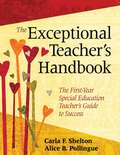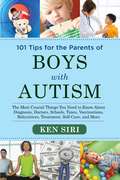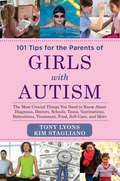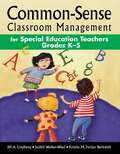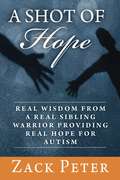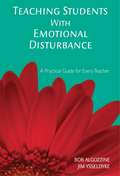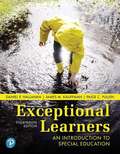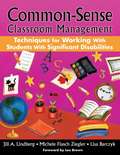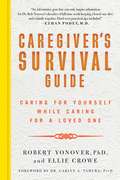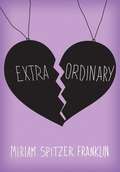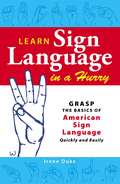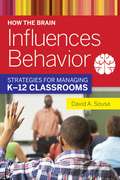- Table View
- List View
Rainbow Relatives: Real-World Stories and Advice on How to Talk to Kids About LGBTQ+ Families and Friends
by Sudi Rick" KaratasWhether you have your own questions because you’re preparing to come out to your kids, or you aren’t sure how to explain to your kids why their uncle has a boyfriend or why their friend has two mommies, this book can help. With an entertaining and educational approach to educating yourself and your peers about the issues and topics surrounding the LGBTQ+ community, Rainbow Relatives will provide answers to your kids’ questions and help you raise them to be open-minded and accepting adults.First and foremost, this book will help you approach the conversations you need to have and predict what you can expect from them. Author Sudi Karatas tells a variety of stories, such as that of a Mormon woman’s transition from fighting against gay rights to becoming a crusader for them. Also included are the voices of filmmakers, actors, musicians, mental health professionals, and more. Through Rainbow Relatives, Karatas helps parents support, advocate for, and educate their children, relatives, and family friends.
Amigos: Friends Forever
by WalkoThe world can present many obstacles-for people with a handicap, simply getting from place to place can be a major challenge. A dog named Pedro wants to explore the world but his lack of sight makes it too dangerous for him to dodge the whizzing cars on a busy street. He meets Rosalie the cat, who is also on a journey but her damaged leg prevents her from crossing the street quickly and unharmed. The pair realizes that they can use each other's strengths to work together and accomplish the task.A charming story about friendship and special needs, incorporating Spanish words with humor and wit, Amigos shows that anything is possible with a caring friend by your side. Even with handicaps, Pedro and Rosalie are able to overcome the hardest challenges by sticking together. This book will teach children the value of friendship, acceptance, and perseverance.
Anthony Best: A Picture Book about Asperger's
by Carol Inouye Davene FahyAnthony Best is not like the other kids in his neighborhood. He screams at loud noises, doesn't like to be called "Tony," spins around in circles to have fun, and throws sand at kids in the sandbox. Other kids laugh at silly knock-knock jokes, but not Anthony; he simply stands and stares. And instead of giggling, he flaps his hands when he is happy. Anthony has Asperger's syndrome, which makes him see the world in a different way. But his friend Hannah knows that although Anthony is different and doesn't play like other kids, he has something very special inside--something that makes him "the best." When Anthony receives a new piano, his hidden talent is revealed.Everyone has their quirks and traits that make them different from others, as Davene Fahy and Carol Inouye illustrate, but those differences are precisely what make us special--no matter how we interact with others. With around 1.5 percent of children in the United States diagnosed with Asperger's syndrome, Anthony Best is a useful tool for teachers, speech therapists, and parents to use in discussions with children about communication problems, accepting differences, teaching tolerance, and discovering what makes each one of us special.
Since We're Friends: An Autism Picture Book
by David Harrington Celeste Shally Alison SingerMatt's autism doesn't stop him from having fun! Even when Matt struggles to navigate social situations, his friend is there to help him out. The two boys enjoy playing sports, watching movies, reading books, and talking about animals. Working together, a best friend's compassion and understanding turn Matt's frustration into excitement. Whether on the basketball court, the playground swings, or at the neighborhood pool, the two friends enjoy each other's company. David Harrington's colorful illustrations complement Celeste Shally's touching story of friendship to create a book that is the perfect guide for children and parents to better understand those with autism spectrum disorders.
My Brother Sammy is Special
by Becky Edwards David Armitage<P>Sammy does not go to school with his older brother-Sammy has to go to school on a special bus. The brothers cannot play in the park together-Sammy lies under the tree and watches the leaves. Sammy's brother is angry because Sammy is autistic and does not know how to be a "normal" brother. <P>Then, one day, Sammy's older brother realizes that he should not demand everything on his own terms and that Sammy's way of doing things may not be so bad after all. <P>Simply written and beautifully illustrated, this moving book realistically portrays being a sibling of an child with autism.
The Myth of Autism: How a Misunderstood Epidemic Is Destroying Our Children
by Elyse Goldberg Michael GoldbergExperts agree that America is in the midst of a disturbing epidemic of what has thus far been diagnosed as autism. In just thirty years autism diagnoses have risen from 1 in 5,000 children to 1 in 110, according to the Centers for Disease Control and Prevention. But in the history of our society there has never been an "epidemic" of any developmental or genetic disorder-it is scientifically impossible. So what is this mysterious affliction known as "autism," and how can we stop it? Dr. Goldberg and his colleagues illustrate why autism cannot be genetic, but is a symptom of a treatable neurological disease that attacks the brain's immune system. Readers will come to understand: Autism is not psychological or developmental, but a medical disease. Autism is caused by a dysfunction in the neuro-immune system and often by secondary neurotropic viruses that impact the neuro-immune system and brain. Illnesses such as autism, ADD/ADHD, and chronic fatigue syndrome all have different "labels" but are actually variations on the same thing: neuro-immune dysfunction syndromes (NIDS). A NeuroSPECT scan is a diagnostic tool which, used in combination with proven therapies and treatments described in this book, is saving lives today, while opening the door to new therapies. What you can do to transform your own life or the lives of your loved ones. Dr. Goldberg believes that in order to save the next generation of children from the incurable stigma of an autism diagnosis, we must quickly realize that all of these disorders are the result of a curable disease process.
Cutting-Edge Therapies for Autism 2011-2012 (Cutting-edge Therapies For Autism Ser.)
by Teri Arranga Rita Shreffler Ken Siri Tony LyonsThe parents of children with autism know that research is a full-time job. For parents with limited time, ability, or resources to do this, Ken Siri and Tony Lyons have compiled the latest in autism research and treatment. Cutting-Edge Therapies for Autism contains contributions from more than eighty experts on a variety of therapies, models, and multifaceted evaluation and treatment centers. Each contributor provides readers with an easy-to-understand description of the topic, including its scientific rationale, development, risks, and benefits. Siri and Lyons include the therapies of the future, focusing on current clinical trials, ongoing research, and the researchers who are striving to better understand autism and find new treatments. Revised and updated to reflect the new developments in the last year, the 2011-2012 edition explains possible causes of autism, including food allergies and gastrointestinal diseases in children. An extensive variety of therapies is discussed, from dietary interventions that reduce sugars and remove gluten to animal assisted therapies that place a dog or cat in the care of the autistic individual to help enhance social and developmental skills. Filled with numerous case studies and more than seventy distinct subjects, Cutting-Edge Therapies for Autism is a detailed and informative guide for anyone affected by autism.
Callous Disregard: Autism and Vaccines: The Truth Behind a Tragedy
by Andrew J. Wakefield Jenny MccarthyAs Andrew Wakefield states in his prologue, "If autism does not affect your family now, it will. If something does not change--and change soon--this is almost a mathematical certainty. This book affects you also. It is not a parochial look at a trivial medical spat in the United Kingdom, but dispatches from the battlefront in a major confrontation--a struggle against compromise in medicine, corruption of science, and a real and present threat to children in the interests of policy and profit. It is a story of how 'the system' deals with dissent among its doctors and scientists." In the pursuit of possible links between childhood vaccines, intestinal inflammation, and neurologic injury in children, Wakefield lost his job in London's Royal Free Hospital, his country of birth, his career, and his medical license. A recent General Medical Council ruling stated that he was "dishonest, irresponsible and showed callous disregard for the distress and pain of children." Maligned by the medical establishment and mainstream media, Wakefield endeavors to set the record straight in Callous Disregard. While explaining what really happened, he calls out the organizations and individuals that are acting not for the sake of children affected by autism, but in their own self-interests.
A Special Day: A Mother?s Memoir of Love, Loss, and Acceptance After the Death of Her Daughter
by Anne-Dauphine JulliandFebruary 29th is a date that comes into existence just once every four years. It is also the birthday of Thaïs-author Anne-Dauphine Julliand’s darling daughter-who died of a genetic disease. Thaïs lived just shy of her fourth birthday. She had a short life but good one.As this special day is about to reappear on her calendar for the first time since her daughter passed away, Anne-Dauphine struggles with how to mark this momentous occasion. She wants to live fully on this special day: Thais would have been eight years old. Vivid memories of life with her daughter begin to blend with the present-every gesture, every word evokes a buried memory, arouses laughter or tears. Yet as the date of her daughter's birthday approaches, she knows she must not lose sight of the family who needs her now: her sons Gaspard and Arthur, and Azylis, her other daughter who is also sick.Anne-Dauphine's message remains simple, true, and strong: we all need to be loved and we all need to be happy despite our ordeals. This is both lesson in happiness and a wonderful love story-A Special Day is an honest, inspirational tale that has touched the hundreds of thousands of lives. It will leave the reader breathless with its beauty.Skyhorse Publishing, along with our Arcade, Good Books, Sports Publishing, and Yucca imprints, is proud to publish a broad range of biographies, autobiographies, and memoirs. Our list includes biographies on well-known historical figures like Benjamin Franklin, Nelson Mandela, and Alexander Graham Bell, as well as villains from history, such as Heinrich Himmler, John Wayne Gacy, and O. J. Simpson. We have also published survivor stories of World War II, memoirs about overcoming adversity, first-hand tales of adventure, and much more. While not every title we publish becomes a New York Times bestseller or a national bestseller, we are committed to books on subjects that are sometimes overlooked and to authors whose work might not otherwise find a home.
Educating Young Children with Autism Spectrum Disorders: A Guide for Teachers, Counselors, and Psychologists
by Beth Harn Erin E. BartonAccording to the CDC, one in fifty American children is diagnosed as having an autism spectrum disorder. This means more school-aged children are entering classrooms with ASDs and teachers are being called upon to help facilitate their learning. Educating Young Children with Autism Spectrum Disorders is aimed at providing strategies for teachers, school counselors, and psychologists to help address the needs of children on the spectrum, as well as their families. Erin E. Barton and Beth Harn draw on current research and practices to discuss the possible causes of autism and to help prepare educators not only for teaching children in the classroom but also for providing families with the tools necessary to continue the educational process at home. Included are topics such as: Improving communication and socializationDeveloping instructive lessonsAssessing students' progressIncluding families in educational goalsFinding students' special interests and using those to help facilitate learningManaging challenging behaviorAnd more Including forms, charts, and a range of classroom activities, this is the only resource you will need to gain the insight and tools for making a difference in the educational lives of young children with autism.
Managing the Cycle of Meltdowns for Students with Autism Spectrum Disorder
by Martin R. Sheehan Geoff ColvinBased on Geoff Colvin's bestselling book, Managing the Cycle of Acting-Out Behavior in the Classroom, this practitioner-friendly guide provides special and general education teachers of autistic students with a six-phase positive behavior support model that includes interventions for each phase. Outlining practical steps for preventing and responding to the various phases of meltdown behavior in students with autism spectrum disorder, you'll find: An overview of ASD Examples of meltdown behavior Common triggers Addressing sensory issues Establishing expectations and rules Collaborating with parents And much moreTeachers will find experienced guidance for providing a supportive environment in which students with ASD can succeed.
The Myth of Autism: How a Misunderstood Epidemic Is Destroying Our Children, Expanded and Revised Edition
by Michael J. GoldbergExperts agree that America is in the midst of a disturbing epidemic of what has thus far been diagnosed as autism. In just thirty years autism diagnoses have risen from 1 in 5,000 children to 1 in 110, according to the Centers for Disease Control and Prevention.But in the history of our society there has never been an "epidemic" of any developmental or genetic disorder-it is scientifically impossible. So what is this mysterious affliction known as "autism," and how can we stop it? Dr. Goldberg and his colleagues illustrate why autism cannot be genetic, but is a symptom of a treatable neurological disease that attacks the brain's immune system. Readers will come to understand that Autism is not psychological or developmental, but a medical disease, Autism is caused by a dysfunction in the neuro-immune system and often by secondary neurotropic viruses that impact the neuro-immune system and brains, illnesses such as autism, ADD/ADHD, and chronic fatigue syndrome all have different "labels" but are actually variations on the same thing: neuro-immune dysfunction syndromes (NIDS), and what you can do to transform your own life or the lives of your loved ones."Dr. Goldberg's knowledge base is greater than anyone else's in this treatment area. He is the best expert in this field, in my opinion. I could have taken my son to any autism doctor in the world and I chose Dr. Goldberg."--Bruce L. Russell, MD, FAAFP
Cutting-Edge Therapies for Autism, Fourth Edition
by Tony Lyons Teri Arranga Ken SiriThe parents of children with autism know that learning about treatments is a full-time job. For parents with limited time, ability, or resources, Ken Siri and Tony Lyons have compiled the latest in autism research and treatment. Exploring the possible causes of autism and presenting novel therapies, medications, and interventions, Cutting-Edge Therapies for Autism contains contributions from more than ninety experts on a wide variety of research findings, therapies, models, and multifaceted evaluation and treatment centers.Revised and fully updated to include the latest developments, this fourth edition includes up-to-date information on mitochondrial, antifungal, and physical therapy treatments; about speech, art, music, and sound therapies; and how diets, HANDLE, indigenous healing, and other exciting new treatments can be used to help your child. It also addresses developing technologies, like the iPad, which provides hundreds of apps that help kids with autism communicate and organize their day, and helps parents keep track of therapy schedules. Filled with case studies and research, Cutting-Edge Therapies for Autism is a detailed and informative guide for anyone affected by autism.
The Exceptional Teacher's Handbook: The First-Year Special Education Teacher?s Guide to Success
by Alice B. Pollingue Carla F. SheltonThe first year in the career of a special education teacher is filled with expectation and promise. Addressing the most common needs of beginning special education teachers, The Exceptional Teacher's Handbook helps new educators move confidently from preplanning to post-planning for the entire school year.The authors present a step-by-step management approach complete with planning checklists and other ready-to-use forms within the context of IDEA 2004 and NCLB. Written from the perspective of a classroom teacher, this popular reference offers updates on:* Recognized disabilities* Best instructional practices for getting the most out of your students* Successful parent conferences* Effective plans for professional learning* Alternate assessments, emergencies in the school setting, education terminology, and moreActively address challenges and concerns with this one-stop handbook that will help smooth the transition from student teacher to professional educator.
101 Tips for the Parents of Boys with Autism: The Most Crucial Things You Need to Know About Diagnosis, Doctors, Schools, Taxes, Vaccinations, Babysitters, Treatment, Food, Self-Care, and More
by Ken SiriThe latest research shows that more than 1 in 50 boys in the U. S. now has autism, and the number keeps rising. Parents of these boys become full-time researchers, always looking for the latest information on doctors, education, and treatments. Following countless hours of study, Ken Siri is sharing what he has learned. In 101 Tips for the Parents of Boys with Autism you will learn about navigating puberty with your son including issues such as personal hygiene, inappropriate touching, and sex. Parents of boys with autism contend with many unique problems due to increases in size, strength, and aggression as the boy ages. How do you keep both yourself and your son safe when he is suddenly twice your size? 101 Tips for the Parents of Boys with Autism has the answer. Other topics include: Teaching your son about grooming, washing, and deodorant Choosing a school Getting insurance to cover treatments How to handle bullying Legal issues and Medicaid pros and cons Maintaining a social life for both you and your son Handling marital stress and divorce Where to go on vacation And many more! From what to do when you first suspect your son might have autism to coping with the first diagnosis, following up with comprehensive evaluation, and pursuing education and treatment, 101 Tips for the Parents of Boys with Autism is the book that every parent of a boy with autism needs.
101 Tips for the Parents of Girls with Autism: The Most Crucial Things You Need to Know About Diagnosis, Doctors, Schools, Taxes, Vaccinations, Babysitters, Treatment, Food, Self-Care, and More
by Tony Lyons Kim StaglianoThe latest research shows that as many as 1 in 88 US children now has autism, and the number keeps rising. Parents of these children become full-time researchers, always looking for the latest information on doctors, education, and treatments, and parents of girls with autism face particularly unique challenges. After countless hours of study, Tony Lyons is sharing what he has learned. In 101 Tips for the Parents of Girls with Autism you will learn how to deal with troubling issues such as periods, birth control, and the risks of sexual abuse. Both Mom and Dad will learn which menstrual pads work best and why the ones with wings just are not them. And how exactly do you get your daughter to actually start using them? 101 Tips for the Parents of Girls with Autism has the answer. Other topics include: How to get the most useful evaluation Where to find other parents of girls with autism Getting insurance to cover treatments Coping with the unique social issues that girls face Legal issues and Medicaid pros and cons Maintaining a social life for both you and your daughter Handling marital stress and divorce Where to go on vacation And many more! From what to do when you first suspect your daughter might have autism, to coping with the first diagnosis, following up with comprehensive evaluation, and pursuing education and treatment, 101 Tips for the Parents of Girls with Autism is the book that every parent of a girl with autism needs.
Common-Sense Classroom Management for Special Education Teachers Grades K5: For Special Education Teachers, Grades 6-12 (Common-sense Classroom Management Ser.)
by Jill A. Lindberg Kristin M. Forjan Beckwith Judith Walker-WiedSpecial help for special education teachers means special success for students!Do you have too many IEPs on your desk? Is it five o'clock and do you still need to contact parents, social workers, and general education co-teachers? Teachers new to special education often feel overwhelmed at the amount of additional planning and information management required.This practical guide shows you how to shape the structure of the teaching day to ensure that learners with special needs experience success. It includes simple teacher-tested, easy-to-implement strategies needing 5 steps or fewer to: Organize students to make the most of the time you have with them Use incentive programs and meaningful consequences to achieve desired behaviors Coordinate with co-teachers, general education teachers, and staff to maximize your effortsSpecial Education teachers face different challenges, paperwork shouldn't be one of them. When the key paperwork is at your fingertips, the lesson plan is prepared, and the to-do list is written, you will find more time in your day for what's most important-your students!
A Shot of Hope: Real Wisdom from a Real Sibling Warrior Providing Real Hope for Autism
by Zack Peter"Autism shakes up your world. It has changed my life and I wasn't even the one diagnosed with it. My brother's name is Ethan Wolfgang, but we call him Deets. He is one of the greatest gifts my family has ever received. And one of the most challenging."So begins Zack Peter's memoir of his family's struggle to cope with his brother's autism. And thus began Peter's mission to ensure that his brother will one day live an independent life. He candidly describes his attempts to get his family on board with Ethan's biomedical treatment and his fight against their reluctance. He relates how his life changes when he comes up with the idea of hosting a local fundraisers, which then throws him into the world of activism. He describes how this leads to his becoming a full-time advocate for autism. As everything in his life becomes more and more centered around "the spectrum," Peter faces the personal struggle of being a voice for the cause while trying to maintain his own identity. Sharing the wisdom he's learned in a voice that's equal parts snark and heart, Peter offers a memoir that's as funny as it is poignant, filled with no-nonsense advice and what he calls "The Hope Rules," which are designed to help preserve sanity, dignity, and the will to stay strong.Whether you know someone with autism or not, Zack Peter's refreshing take on his life as a sibling and activist serves as inspiration to persevere, even when the odds seem impossibly long. It's everything you need to help keep your head up...like the bottom of your glass.
Teaching Students with Emotional Disturbance: A Practical Guide for Every Teacher (Practical Approach To Special Education For Every Teacher Ser. #Vol. 11)
by Bob Algozzine Jim YsseldykeValuable insight and sound intervention strategies for addressing the needs of students with social and emotional problems!When a student is inattentive, extremely anxious, or has an outright tantrum in the classroom, ascertaining the exact cause may be difficult, but it is a critical step in reaching and teaching the students who exhibit these behaviors. In Teaching Students With Emotional Disturbance, Ysseldyke and Algozzine show readers how to recognize the cognitive, academic, physical, communicational, and behavioral characteristics of several forms of emotional disturbance and offer specific strategies for responding to anxiety issues, opposition and noncompliance, tantrums, disruptiveness, inattention, task avoidance, and more.Highlights include:* A pretest and posttest to help readers assess their understanding about the origins of social and emotional difficulties and how they are best addressed* Effective interventions and instructional adaptations for students who have emotional problems* Trends and issues currently influencing how students with social and emotional problems are taught* Key vocabulary termsThe authors offer a wealth of information and resources so that teachers can better identify the needs of students with emotional disturbance and help them succeed in the classroom.
Exceptional Learners: An Introduction to Special Education
by Daniel P. Hallahan James M. Kauffman Paige C. PullenAn up-to-date introduction to the characteristics of exceptional learners and their education <P><P>Exceptional Learners: An Introduction to Special Education focuses on exceptional learners and classroom practices, as well as the psychological, sociological, and medical aspects of disabilities and giftedness. <P><P>Based on the authors’ premise that professionals working with exceptional learners need to develop not only a solid base of knowledge, but also a healthy attitude toward their work and the people whom they serve, this book is designed to reach the heart as well as the mind. It asks both general and special educators to challenge themselves to acquire a solid understanding of current theory, research, and practice in special education, and to develop an ever more sensitive understanding of exceptional learners and their families. <P><P>The 14th Edition includes the new definitions of Specific Learning Disorder, Attention Deficit Hyperactivity Disorder (ADHD), Emotional and Behavioral Disorders, and Autism Spectrum Disorders (ASD) from the American Psychiatric Association’s DSM-5, along with expanded coverage of topics like Universal Design for Learning, Multi-Tiered System of Supports (MTSS), and Positive Behavioral Interventions and Supports (PBIS).
Common-Sense Classroom Management: Techniques for Working with Students with Significant Disabilities
by Jill A. Lindberg Michele Flasch Ziegler Lisa BarczykToday's diverse classrooms challenge even the most experienced teachers. Using an easy-to-read format, this resource offers tools and techniques that teachers can use to reach all learners, particularly those with more significant disabilities, and give them the support they need to succeed.
Caregiver's Survival Guide: Caring for Yourself While Caring for a Loved One
by Ellie CroweCaregiver's Survival Guide is based on Dr. Robert Yonover's personal experiences. While struggling to become a successful scientist and inventor, he also was primary caregiver for his paralyzed wife for more than twenty years and raised their two children. Yonover takes you into the throes of his life as a caregiver, husband, and father, offering guidance and hope through his story. He provides advice on: Dealing with heavy news Handling day-to-day challenges Holding on to the foundation of your relationship Taking stock of finances Adapting and enjoying life Staying sane Maintaining a social life Fighting for your rights Through Caregiver's Survival Guide, Dr. Yonover will equip other caregivers who face similar physical, mental, social, and financial challenges with tips and guidelines from his own experiences and other experts to help make their situation survivable.
Extraordinary
by Miriam Spitzer FranklinLast spring, Pansy chickened out on going to spring break camp, even though she’d promised her best friend, Anna, she’d go. It was just like when they went to get their hair cut for Locks of Love; only one of them walked out with a new hairstyle, and it wasn’t Pansy. But Pansy never got the chance to make it up to Anna. While at camp, Anna contracted meningitis and a dangerously high fever, and she hasn’t been the same since. Now all Pansy wants is her best friend back--not the silent girl in the wheelchair who has to go to a special school and who can’t do all the things Pansy used to chicken out of doing. So when Pansy discovers that Anna is getting a surgery that might cure her, Pansy realizes this is her chance--she’ll become the friend she always should have been. She’ll become the best friend Anna’s ever had--even if it means taking risks, trying new things (like those scary roller skates), and running herself ragged in the process. Pansy’s chasing extraordinary, hoping she reaches it in time for her friend’s triumphant return. But what lies at the end of Pansy’s journey might not be exactly what she had expected--or wanted. Extraordinary is a heartfelt, occasionally funny, coming-of-age middle grade novel by debut author Miriam Spitzer Franklin. It’s sure to appeal to fans of Cynthia Lord’s Rules and will inspire young friends to cherish the times they spend together. Every day should be lived like it’s extraordinary.
Learn Sign Language in a Hurry: Grasp the Basics of American Sign Language Quickly and Easily
by Irene Duke"I love you.""What can I get you?""Let's take a walk."Wanting to say simple things like these but not being able to is frustrating and disheartening-but learning how to communicate can be easy and fun! This book is a basic guide to the alphabet, vocabulary, and techniques it takes to connect using American Sign Language. Whether signing out of necessity or learning for the sake of growing, you will enjoy this practical primer. After reading this book, you will be able to use American Sign Language in a social, educational, or professional setting.Whether the goal is to communicate with hearing-impaired grandparent, a child with special needs in school, or an infant, people learn sign language for many different reasons. Easy to read and reference-and complete with images and examples of common signs-this basic guide allows you to make a meaningful connection that's otherwise impossible.
How the Brain Influences Behavior: Strategies for Managing K?12 Classrooms
by David A. SousaCombining theory and practice, David A. Sousa helps educators understand what is happening in the brains of students with behavior problems and offers practical, effective intervention strategies compatible with current findings in neuroscience. In easy-to-understand language, the author presents current information on brain development and function and highlights factors that affect social and emotional decision-making and negative behaviors like impulsivity, defiance, and violence. Comprehensive yet concise, this guide for K-12 teachers and counselors provides methods for teaching self-control and fostering positive relationships with troubled students and provides case studies that match effective strategies with specific behaviors. Educators will find answers to critical questions such as: How does the rate of brain development explain erratic behavior of adolescents? What type of data collection can help teachers manage misbehavior? Can peer influence help curb misbehavior rather than encourage it? Why are boys more likely to misbehave than girls and what can teachers do about it? How do school and classroom climates affect student behavior? This invaluable handbook also features reproducible forms, worksheets, checklists, additional references, and an expanded list of primary research sources to help teachers understand and apply research-based principles for classroom and behavior management.
